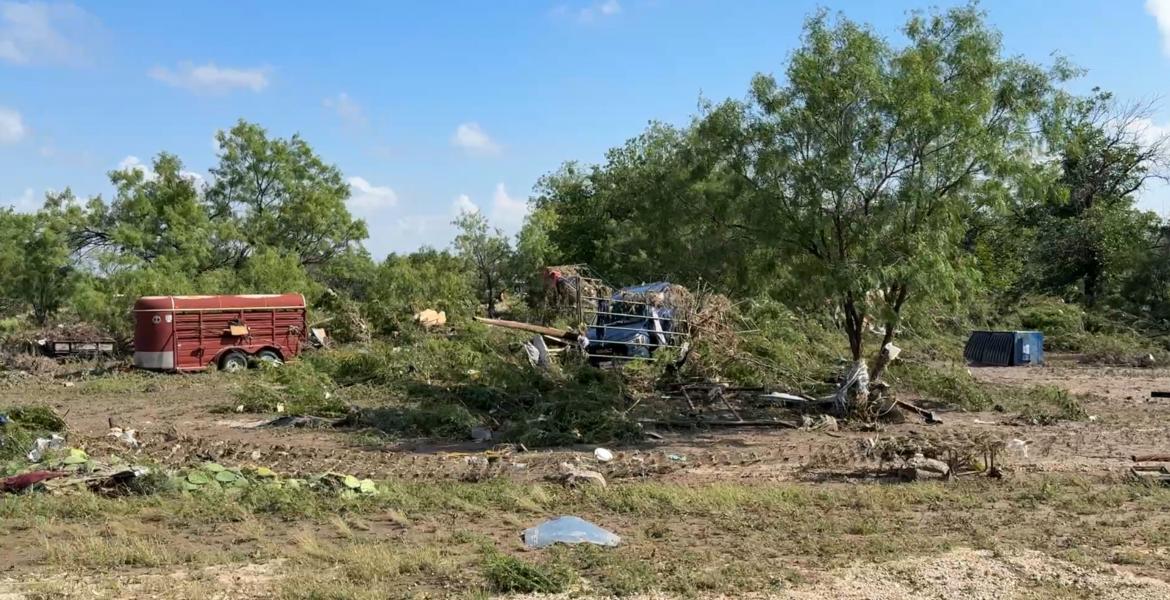Roughly one in eight women will be diagnosed with breast cancer over the course of their lives, the American Cancer Society reports. In 2014 alone, more than 232,000 women in the United States were diagnosed with the disease, and approximately 40,000 deaths were reported.
Without a known cure, early detection is the best protection, and the local Laura W. Bush Institute for Women’s Health is working hard to offer services to all women 40+ to prevent them from become victims of the disease.
Making use of a grant in the sum of over $1 million, the institute has been offering free mammograms and additional services to the un- and underinsured in the Concho Valley for the past 2.3 years.
“There are over 600 women that we’ve served and we’ve provided around 1,000 breast care services,” said Cancer Prevention Research Institute of Texas Grant Administrator Norely Perez. “Sometimes a woman that gets a screening also needs a diagnostic mammogram, then needs an ultrasound, then ends up in a biopsy if they’re going to get diagnosed.”
The variety of services included under the grant are varied, Perez said, and extend to the screening mammogram, diagnostic mammogram, breast ultrasound, stereotactic biopsy, and ultrasound-guided biopsy.
“We’re currently applying for an expansion grant that if we were to get it, we would start this December and it would cover the breast care services as well as the cervical [services],” she said. “We would also include more counties. We would expand the area we cover.”
Presently, the institute covers 14 counties in the Concho Valley and has partnerships set up with hospitals in San Angelo, Brady and Sonora. Qualification for the free services is largely dependent upon family size and income, Perez said, and the mammograms start for women aged 40 and up.
“Although it does cover low income, it covers a little bit above that,” Perez explained. “It covers that donut-hole population—those people that can’t quite afford insurance but then it’s too expensive to get their yearly mammogram screenings. If they don’t make enough money to qualify for other programs, most likely they’ll qualify for us.”
Perez also noted an exception to the age rule for women who meet the financial qualifications but who are under 40 if they are showing symptoms of breast cancer. Symptoms include a lump, nipple discharge, dimpling and discoloration of breast tissue, she said.
“If the woman has breast symptoms, we would pay for her doctor’s consult and if her doctor wants her to have a mammogram, we would go ahead and do that,” she said.
But even those not showing symptoms should regularly check their breasts for lumps and schedule annual mammograms after the age of 40, she said.
“Early detection is best protection. It is really important that they get a yearly mammogram because your breasts can change from one year to another,” Perez explains. “It’s really important for them to check their breasts monthly and know their breast tissue and then it’s really important that after 40 they do get their mammograms. There’s stuff that you cannot pick up on yourself that only a mammogram can pick up.”
Likewise, Perez says there doesn’t have to be a lump or other symptoms present for one to be diagnosed, thus making mammograms so important as women age. The grant through the institute covers both screening mammograms and diagnostic mammograms, which are more thorough in nature. They also cover ultrasounds, which will pick up things not shown on the screenings.
In order to check if you’re qualified for the services included under the grant program, Perez urges calling for more information. There are general guidelines that dictate eligibility, but generally if your co-pay is over $100 or if your deductable is over $1,000, you qualify. She also provided the example of a family of four whose monthly income is $7,684 or less.
“That’s just an example,” she said. “We do a pre-screening, it takes five minutes, they know if they qualify. If they do qualify, we make an appointment for them to come to us. If they’re out of town, we can mail them or fax them the enrollment information and they can send it back to us and we can make the appointment for the mammogram.”
Those interested in checking their eligibility may call 325-942-2531. The grant is not limited to residents of the 14 counties, and those outside the coverage area may take advantage of the program by visiting one of the three locations, either in San Angelo, Sonora or Brady.
“It’s really easy to go through our program and to know if you qualify,” Perez said. “It’s not a lot of paperwork. It takes 15 minutes if you do qualify to get it done and get your appointment. It is also very important for you to get your yearly screening mammogram if you’re over 40 years of age.”
Subscribe to the LIVE! Daily
Required






Post a comment to this article here: